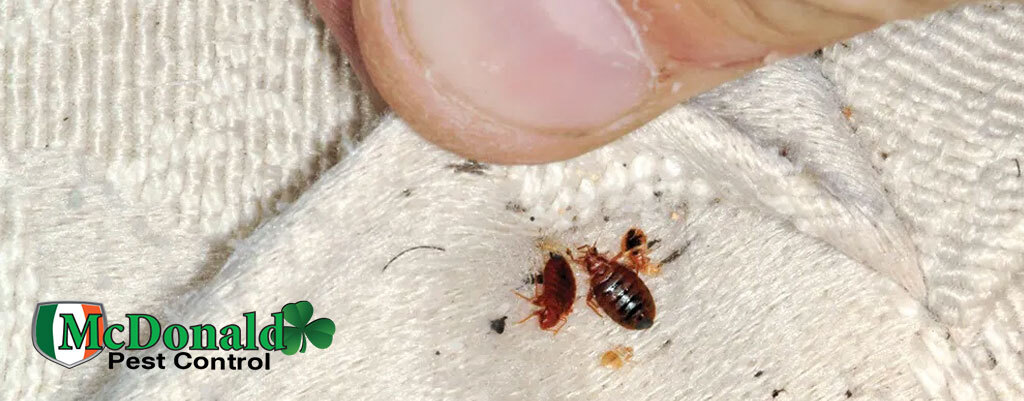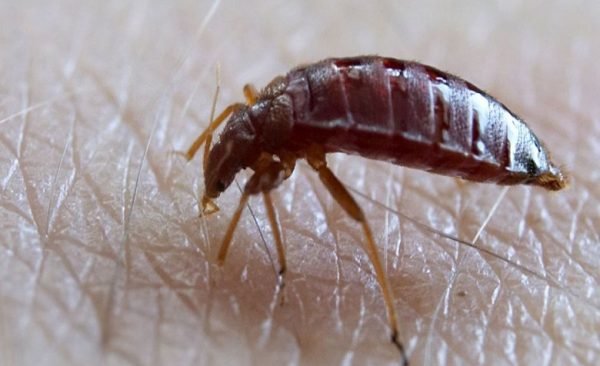How to Recognize Bed Bug Bites and Treat Them Quickly
Get Informed About the Kinds Of Insect Control Techniques and Their Benefits for Property Owners
Comprehending the various parasite control techniques readily available to house owners is important for reliable insect management. House owners who are educated can make strategic selections that not only address insect concerns but likewise enhance the general quality of their living atmosphere.
Chemical Parasite Control Techniques
Chemical pest control techniques are a critical element of incorporated pest administration strategies for house owners looking for efficient services to pest problems. These approaches involve the application of chemical compounds created to remove or deter bugs that endanger personal effects, health, and comfort. Typical chemicals made use of include pesticides, herbicides, fungicides, and rodenticides, each customized to target details bugs.
The primary advantage of chemical bug control is its rapid efficiency; several formulas give prompt results, reducing pest populaces considerably quickly. Additionally, breakthroughs in chemical solutions have brought about products that are more ecologically pleasant and have reduced toxicity levels for non-target organisms when used appropriately.

Organic Pest Control Strategies
Natural pest control techniques have obtained importance as homeowners look for much safer and extra lasting choices to typical chemical strategies. Biological insect control methods make use of all-natural predators, bloodsuckers, or virus to handle parasite populations effectively. This technique is not only eco friendly yet likewise lessens the threat of injury to non-target species, including helpful pests and wildlife.
One of one of the most common biological control approaches entails presenting natural killers right into the setting. Ladybugs can be made use of to manage aphid populations, while nematodes target soil-dwelling insects like grubs. In addition, parasitoids-- microorganisms that live on or within a host-- can be used to regulate particular parasite species by laying eggs inside them, ultimately causing their death.
Another technique is using biopesticides, which are acquired from natural materials such as plants, minerals, or microorganisms (bed bug exterminator). These items can properly target pests while posturing marginal danger to people and pet dogs. On the whole, biological pest control methods supply property owners with an effective ways of insect administration that lines up with eco-friendly concepts, advertising a healthier living setting while minimizing reliance on synthetic chemicals
Mechanical Bug Control Techniques
Mechanical pest control approaches encompass a variety of techniques that physically protect against or eliminate insects without the use of chemicals. These methods are particularly useful for homeowners seeking eco-friendly options while ensuring the safety and security of their home.
One typical method is making use of obstacles, such as nets, catches, and displays, which stop insects from going into homes or certain areas. As an example, setting up window screens can properly maintain bugs out, while utilizing physical barriers around gardens can discourage larger insects like deer or rabbits. Furthermore, mechanical traps created for rats can record and remove these insects without the requirement for poisonous materials.
An additional efficient visit our website method entails making use of vacuum cleaners and brooms to get rid of bugs directly from surface areas. Normal cleansing and upkeep can substantially lower insect populations by eliminating food resources and concealing areas. Additionally, utilizing gadgets like ultrasonic insect repellents can hinder various insects with audio waves that are unpleasant to them however faint to human beings.
Cultural Bug Control Practices
Cultural bug control methods concentrate on changing the setting and administration strategies to create conditions that are less favorable to pest invasions. These techniques are basic in keeping a well balanced community and reducing the reliance on chemical treatments. By changing agricultural practices, home owners can efficiently prevent pests while advertising plant health.
One usual approach includes crop turning, which disrupts the life cycles of parasites by transforming the sorts of plants expanded in a specific area (bed bug exterminator). This not just lessens pest populaces yet also boosts dirt wellness. Furthermore, intercropping-- planting varied crops in proximity-- can confuse bugs and minimize their capacity to find their recommended host plants
Water administration is an additional critical element of social practices. Correct irrigation techniques can avoid standing water, which acts as a breeding ground for mosquitoes and other bugs. Furthermore, keeping cleanliness around the home, such as on a regular basis eliminating debris and food waste, can significantly reduce pest tourist attraction.
Including these social techniques into a comprehensive bug management approach permits home owners to create an atmosphere that normally deters parasites, consequently improving the effectiveness of other control methods while advertising sustainable gardening and landscape design.

Integrated Parasite Monitoring Approaches
Integrated Insect Monitoring (IPM) stands for an alternative approach that integrates various methods to effectively handle bug populaces while lessening ecological influence. This methodology integrates organic, cultural, physical, and chemical techniques to attain lasting insect control. By assessing pest populaces and their natural adversaries, IPM highlights monitoring and identifying pests before executing control procedures.
Among the core principles of IPM is making use of limits, which develop the level Web Site of insect activity that warrants treatment. This guarantees that treatments are used just when necessary, decreasing the dependence on chemical pesticides. Biological control techniques, such as presenting natural killers or parasites, operate in combination with cultural methods like plant rotation and environment adjustment to disrupt pest life process.
In addition, IPM urges making use of least-toxic chemical choices when treatment is required, focusing on products that position minimal risk to non-target organisms and the setting. For house owners, taking on IPM approaches not only enhances the efficacy of insect monitoring but additionally promotes a much healthier living environment, fostering biodiversity and lowering chemical exposure. Ultimately, IPM encourages property owners to make informed choices that stabilize pest control with ecological responsibility.
Verdict
In conclusion, understanding the various bug control find approaches empowers home owners to make educated decisions relating to pest management. Each strategy-- chemical, biological, mechanical, cultural, and incorporated bug administration-- offers unique advantages that cater to various requirements and preferences.
Comprehending the various pest control approaches offered to property owners is important for reliable pest management.Chemical parasite control approaches are an essential part of integrated pest monitoring approaches for house owners seeking reliable options to pest infestations. Overall, organic insect control strategies supply property owners with an efficient ways of insect monitoring that lines up with ecological concepts, promoting a healthier living environment while minimizing reliance on artificial chemicals.
Cultural bug control practices concentrate on modifying the atmosphere and management methods to create problems that are less favorable to pest infestations.In final thought, recognizing the different parasite control methods equips homeowners to make educated choices regarding pest administration.